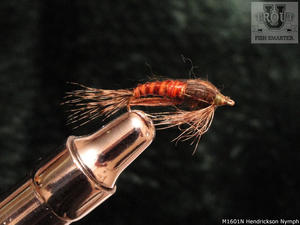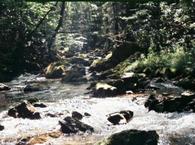
After mayfly eggs are laid, they hatch within usually 2 or 3 weeks and start the next cycle as nymphs. There are four basic types of mayfly nymphs - the burrowers, swimmers, clingers and crawlers. Each type has their own particular habitat and behavior. We have discussed the habitat and the behavior of the swimmer nymphs in a previous blog. Now we will discuss the mayfly crawler nymphs.
The mayfly crawler nymphs are of the Ephemerellidae family of the order Ephemeroptera which includes rhe Sulfers, Hendricksons, Eastern Pale Evening Duns, Pale Morning Duns, Western Green Drakes, Little Dark Hendrickson, Small Western Dark Hendricksons, ChocolateDuns, Blue Quills, Mahogany Duns, Eastern Blue-winged Olives and Tricos. They are distributed throughout North America as well as the UK.
To hide, crawler mayfly nymphs nestle down in the crevices between rocks and pebbles but seldom underneath them. Some species will also hide in the under water grasses. As the name implies they crawl along the bottom only coming out from their hiding places to feed. At this time, they are very well exposed and vulnerable to the hungry trout. The crawler nymphs are a delight to anglers since they slowly swim up and down between the surface and the bottom several times before actually emerging. They are always available for the trout to eat and are especially available to the trout prior to their hatch.
The majority of flies to imitate the crawler nymphs can be from hook size 12 down to the very small hook size of 22, however, the Great Red Quill and the Western Green Drakes can be fished with a hook size of 10 and larger.
Obviously, when you are imitating crawlers, you will want to keep your fly right on the bottom. The fly may be slightly weighted, so it can be fished from the bottom to just beneath the surface skim where these crawlers shed their nymphal shucks and emerge. When fishing the bottom, however, it will not be necessary to impart any motion to the fly.
Learn more about mayflies and their life cycles in Class 301 "Introduction to Mayflies" and more about nymping can be found in Class 303 "Top Nymping Tactics". Both of these short free classes can be found in TroutProStore.com Graduate Level Classes. We will blog more about the other types of mayfly nymphs so stay tuned.





